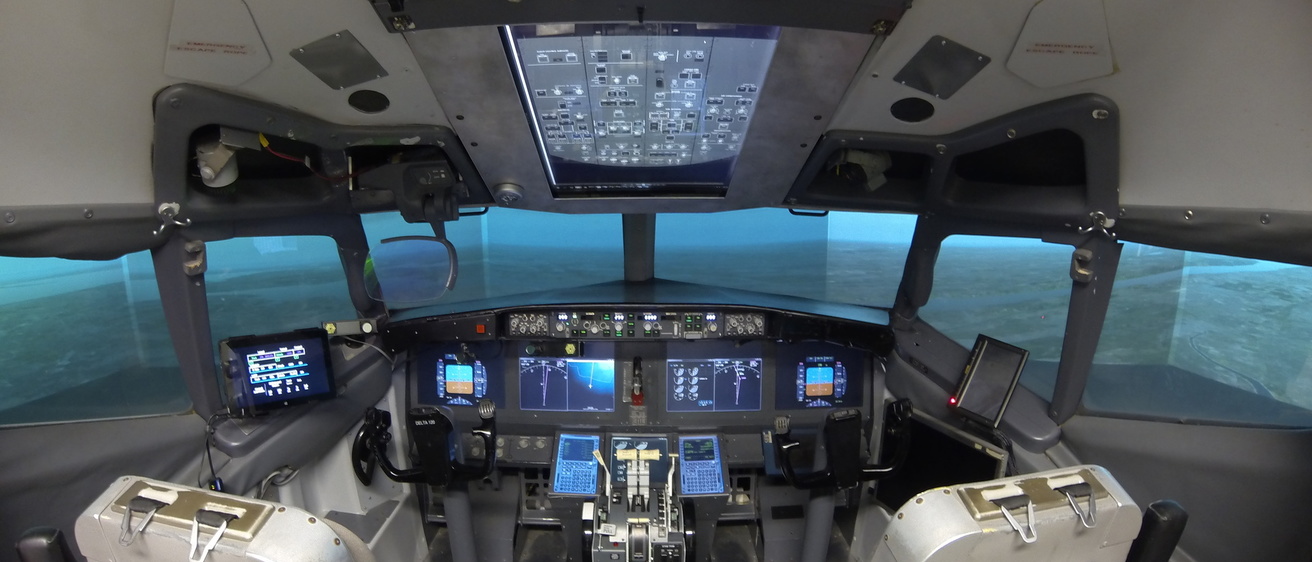The Operator Performance Lab (OPL) has been involved in the design and flight testing of civilian and military avionics systems for over 20 years.
In the civilian avionics domain, OPL developed and commercialized a Synthetic Vision System (SVS) that has over 10,000 units flying worldwide. OPL developed avionics and display systems for military aircraft and has been the first to fly several large program systems, such as the Collins Common Range Integrated Instrumentation System (CRIIS) and the more recent Tactical Combat Training System (TCTS) Increment II.
OPL was recently honored for the latest efforts in this long line of work. It was among two recent awards for OPL, which is part of the College of Engineering's University of Iowa Technology Institute.
The contributions to testing recently received recognition during the 2020 NASA Langley Research Center Honor Awards on Sept. 30, 2020. OPL also received recognition from the Society of Experimental Test Pilots (SETP) for contributions to a paper related to human-systems interfaces, during the organization's annual meeting in September.
NASA/FAA award
OPL Director Tom "Mach" Schnell and OPL staff Mathew Cover, project engineer, Ezekiel Gunnink, research assistant, and Jon Stoltz, engineering associate, earned recognition in the National Aeronautics and Space Administration (NASA)/Federal Aviation Administration (FAA) Airplane State Awareness Research Team Award for the project entitled,
“Technologies for Indicating System Status and Dependencies during Complex Non-Normal Situations.”
The project came in the wake of accidents, such as Air France 447 and Asiana 214, which illustrate how flight crews can be overwhelmed by the flood of information and the modality of the automation.
“Modern avionics have layers of ‘black-box’ technology between the physical aircraft systems and the flight crew,” said Schnell, a professor of industrial engineering. “Therefore, today’s pilots are often forced to only understand the aircraft at the user interface layer.”
Testing was initially conducted in the 737 flight simulator at OPL, Schnell said. Final testing was conducted at the NASA Langley Research Center (LaRC) Cockpit Motion Facility. To combat the hazard of automation mode confusion, they implemented two separate candidate flight displays, the “Automation Does What?” (ADW) system developed by Dr. Randy Mumaw of the San Jose State University and the Flight Deck-Automation Function Configuration (FD-AFC), developed by Dr. Lance Sherry of the George Mason University.
The ADW focuses on displaying the current and next planned lateral and vertical flight path in consideration of waypoints and restrictions. The FD-AFC synopsizes the current automation mode by illustrating the logical data from the avionics interface to the control surface by means of a dynamic, synoptic automation “plumbing” diagram.
The FAA may use the results to bolster new certification requirements for future flight decks.
SETP recognition
The Society of Experimental Test Pilots (SETP) named Schnell and Patrick Highland, a PhD candidate in industrial and systems engineering and a test pilot for OPL, among several U.S. Air Force Test Pilot School graduates as co-authors for the Javier Arango award given to the best human machine interface paper. The paper was entitled, “Towards an Improved Interface for Large-Format Displays: A Comparison between Eye Tracking, Rhino Pointing, and Traditional Tactile Input.”
Schnell provided more information about this project:
Progression of the human-machine interface (HMI) has lagged the growth in size and complexity of displays, particularly in fifth-generation fighters. Cockpits continue to use a cursor-slew switch in combination with hands-on-throttle and stick (HOTAS) actuators to manipulate display symbols. Aircrew need higher performance, lower workload HMIs. The project, entitled "Have Rhino," compared three different human-system interfaces (HSIs): eye-tracking, rhino-pointing (a form of head or nose tracking), and traditional HSI. Testing was requested by the 711th Human Performance Wing (HPW) of the Air Force Research Laboratory (AFRL) at Wright-Patterson Air Force Base (AFB), Ohio. The lead developmental test organization (LDTO) was the Air Force Test Center at Edwards AFB, California. The executing test organization was Class 19B of the USAF Test Pilot School, 412th Test Wing, Edwards AFB.
Testing was conducted at Iowa City Municipal Airport in a modified L-29 Delfín operated by the OPL.

| 
| 
|
